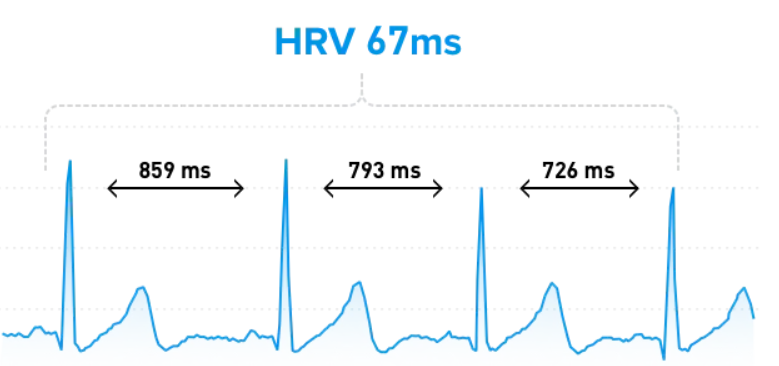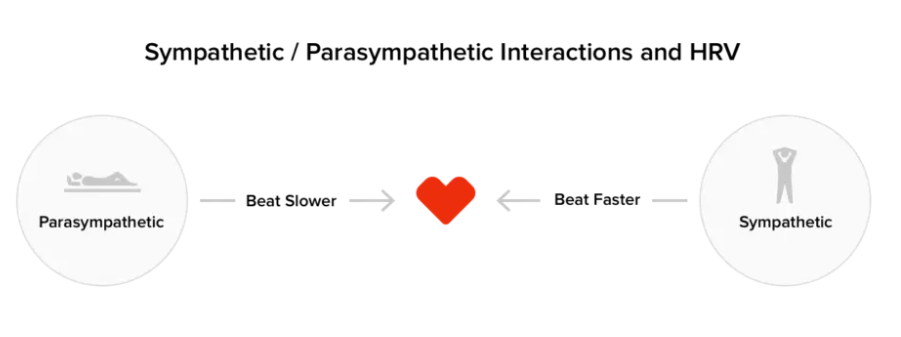Everything You Should Know About HRV
Heart rate variability is literally the variance in time between the beats of your heart. So, if your heart rate is 60 beats per minute, it’s not actually beating once every second. Within that minute there may be 0.9 seconds between two beats, for example, and 1.15 seconds between two others. The greater this variability is, the more “ready” your body is to execute at a high level.
These periods of time between successive heart beats are known as RR intervals (named for the heartbeat’s R-phase, the spikes you see on an EKG), measured in milliseconds:
What Causes Heart Rate Variability? Parasympathetic vs. Sympathetic
Although HRV manifests as a function of your heart rate, it actually originates from your nervous system. Your autonomic nervous system, which controls the involuntary aspects of your physiology, has two branches, parasympathetic (deactivating) and sympathetic (activating).
The parasympathetic branch (often referred to as “rest and digest”) handles inputs from internal organs, like digestion or your fingernails and hair growing. It causes a decrease in heart rate.
The sympathetic branch (often called “fight or flight”) reflects responses to things like stress and exercise, and increases your heart rate.
Heart rate variability comes from these two competing branches simultaneously sending signals to your heart. If your nervous system is balanced, your heart is constantly being told to beat slower by your parasympathetic system, and beat faster by your sympathetic system. This causes a fluctuation in your heart rate: HRV.
Interview with Ben Greenfield (Optional)
Quiz
Sources:
Everything You Need to Know About Heart Rate Variability (HRV), Whoop.com

